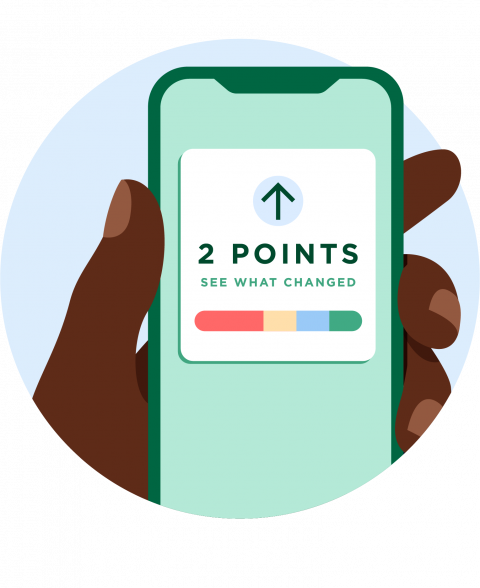How to Get a Car Loan

Many or all of the products featured here are from our partners who compensate us. This influences which products we write about and where and how the product appears on a page. However, this does not influence our evaluations. Our opinions are our own. Here is a list of our partners and here's how we make money.
To get a car loan with the best interest rate, it’s essential to follow certain steps, such as shopping lenders and getting preapproved, before going to the dealership.
1. Check your credit report
Your credit score and your income will determine how much you qualify to borrow — and at what interest rate.
Don’t apply for an auto loan without checking your credit report first. If there are any errors or incorrect information on your report, such as fraudulent activity, you could be turned down for a loan or offered only a very high interest rate.

You’re entitled to a free copy of your report every 12 months from each of the major reporting bureaus (Equifax, Experian and TransUnion) at AnnualCreditReport.com. (Due to COVID, you can now request a copy of your credit report weekly through December 2023.) If you find errors or evidence of fraud when you check your credit report, you should file a dispute to correct them, before you apply for a car loan.
Credit reports are the raw material used to calculate credit scores. Many banks, credit card issuers and personal finance services — including NerdWallet — also provide free online credit scores and report information. They are useful ways to gauge your progress, but they may not be the scores that lenders use to approve you. Most auto loan lenders use specialized scores that emphasize your history of repaying auto loans.
If your credit is subprime or poor — typically a score of 600 or lower — and you don’t absolutely require a car right away, consider spending six months to a year improving your credit before you apply. Making payments on time and paying down credit card balances can help bolster your credit so you can qualify for a better loan.
You can look up average car loan interest rates to get a general idea of rates for people with your credit score.
For most lenders, your credit history matters as much as your current credit scores. That is, if you have successfully paid off previous automobile purchases, you are more likely to be approved or get a lower interest rate than otherwise. Conversely, prime credit scores can be offset by short credit history or no previous auto loans.
In addition to credit requirements, you'll need to meet minimum income standards and show a stable work history.
2. Apply for auto loans from multiple lenders
Once you’ve checked your credit, it’s time to look at auto loans and lenders, which can be categorized as:
Large national banks, such as Bank of America or Capital One.
Local community banks or credit unions.
Online lenders that only provide auto loans.
Dealership financing or through automakers' “captive” lenders.
Online car retailers with in-house financing, if purchasing a car there.
You’ll want to compare quotes from the first three types of lenders first, even if you plan to take dealership or online retailer financing eventually. Your own bank or credit union may give you a preferred rate, especially if you agree to automatic loan payments from a checking account there. You can also compare auto lenders online.
If you want to buy your car from a private party, rather than a dealer, make sure that’s allowed by each lender you consider seriously. Not all lenders allow private party auto loans.
Before you apply for a loan, you should also take time to learn the car financing language you will encounter.
Apply for an auto loan with these lenders
| Learn More | Learn More | Learn More |
Min. credit score620 | Min. credit score660 | Min. credit score575 |
Est. APR5.74-18.54% | Est. APR6.99-14.74% | Est. APR3.94-21.00% |
Loan amount$7,500-$500,000 | Loan amount$5,000-$100,000 | Loan amount$8,000-$100,000 |
3. Get preapproved for an auto loan
Once you’ve narrowed your search to a few lenders, it’s time to request interest rate quotes and compare offers. Getting lenders to compete for your business helps you get the best rate. Also, because lenders weigh factors in your credit report differently, car loan interest rate offers can differ widely.
When applying to lenders, you can be pre-qualified or preapproved for a loan. These are different, and it's important to know what each one means.
Pre-qualification provides an estimate of the rate and loan amount you might expect to qualify for, based on a limited amount of information the lender has about your credit history. Pre-qualification requires only a “soft” credit pull, so it will not lower your credit score. However, the estimated rate you are given could change considerably once a full credit check is done.
Preapproval is a step up from pre-qualification. It requires a “hard” credit pull, temporarily lowering your credit score. Because the lender has more information about your credit history, and personal information you provide, the estimated rate should be closer to the final rate you receive upon loan approval.
If you’re really ready to buy your car, getting preapproved for an auto loan offers several advantages, such as giving you more negotiating power at the dealership and protecting you from marked up rates.
Multiple hard credit inquiries in a short time are counted as just one inquiry.
Shopping auto loans: preapproval vs. pre-qualification | |
|---|---|
Preapproval means a lender has reviewed your credit report (not just the score) and other information to determine a loan amount and rate you’re likely to receive. Preapproval quick facts:
| Pre-qualification means you're likely to receive a loan at a given rate (or within a wide range) based on limited personal and financial information. It's not an offer to fund you. Pre-qualification quick facts:
|
Neither pre-qualification nor preapproval are a guarantee that your auto loan will be approved. Both can help you with planning and budgeting for your car purchase, but preapproval is more of an indication to the dealer that you’re a serious buyer able to secure financing.
4. Use your loan offer to set your budget
Your preapproval offers will state the maximum amount you can borrow, but that’s not the price of the car you can buy. You should allow an additional 10% to cover taxes and fees. Use an auto loan calculator to design your loan. Put in your down payment, trade-in value of your current vehicle and lending terms to find the right monthly payment that fits in your budget.
If that payment is too much for your comfort, remember that the preapproval offer is just a limit — you can borrow much less if you choose. It’s far more important to be able to make your loan payments comfortably, even if the bank says you can afford more.
5. Find your car
Now that you’ve got financing offers and know the maximum car price you can finance, it’s time for the fun part: picking out your new ride.
To avoid disappointment once you have your heart set on a car, be sure to check the loan offers for:
Excluded brands. Some lenders exclude certain car manufacturers or types of cars, such as electric cars, from funding.
Dealership requirements. Some lenders, such as Capital One, require you to shop through a specific network of dealers.
Lender requirements if you intend to buy a car from an individual.
Time restrictions. Most lenders give you 30 days to use the loan. If you run out of time, call the lender to extend the offer.
6. Review the dealer’s loan offer
Once you’ve taken a test drive and have found a car that meets your needs, you may still have a shot at an even better interest rate — from the dealer.
Carmakers set up their own banks exclusively for auto purchases through dealerships, and they sometimes offer below-market interest rates. Once the finance manager finds out you’re preapproved for a set rate, he’ll likely try to beat that rate to get your business. There’s no harm in applying to see how low your interest rate can go.
And if you don’t want to play that game, still be sure to tell the salesperson you’re already preapproved. Tell the salesperson you are a “cash buyer,” so you can haggle on just the price of the car, not the monthly payment.
» RESOURCE: Your free car-buying cheat sheet
7. Choose and finalize your loan
If the dealership beats your preapproved rate (and the other terms are the same), congratulations — you can rest assured you got a great financing rate. You can take that loan and disregard your other offers. Just be sure to read the contract before signing, to confirm there’s nothing sneaky in the contract, like:
Hidden fees. In addition to the cost of the car, you will pay sales tax, a documentation fee and registration costs. Question any additional fees.
A longer loan term. Depending on the APR, adding even 12 months to your loan term can cost hundreds more. Watch out for a better dealership rate at the expense of a longer loan.
Add-ons you didn’t ask for, like gap insurance, which you can usually get cheaper elsewhere.
An early payoff penalty. Most auto lending contracts don’t have this, but it’s best to check.
If you do use your preapproved offer, follow the lender's instructions to complete your loan application and finalize funding. In some cases, a dealership representative will contact the lender to initiate funding, and in others you follow up with the lender yourself.
If you’re buying a car from a private seller, they’re likely to request cash or a cashier’s check. Once you’ve selected the car, you’ll need to go back to the lender and ask how to finalize the transaction. Then, you’ll sign the paperwork. It’s still a good idea to check the contract for the items above, but you’re much safer from add-ons when you don't finance through the dealership.
8. Make payments on time
After your auto loan is locked in, you’re ready to drive off into the sunset. But don’t forget one more step — making on-time car loan payments. Your lender will most likely provide online access to your loan information, where you can set up automatic payments. Taking time to do this helps you build a history of on-time loan payments, an important contributor to your credit score and ability to get a loan with better rates in the future.





